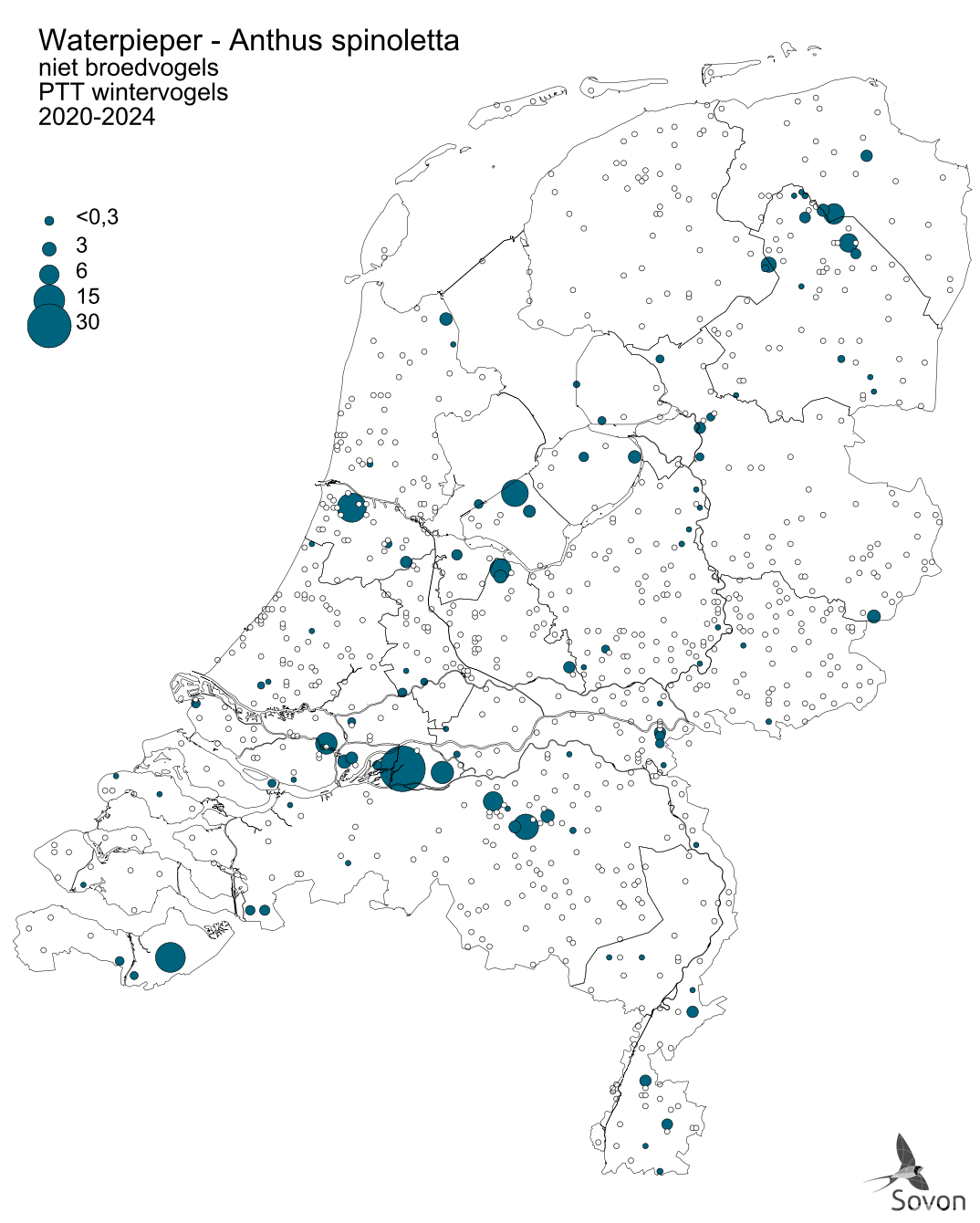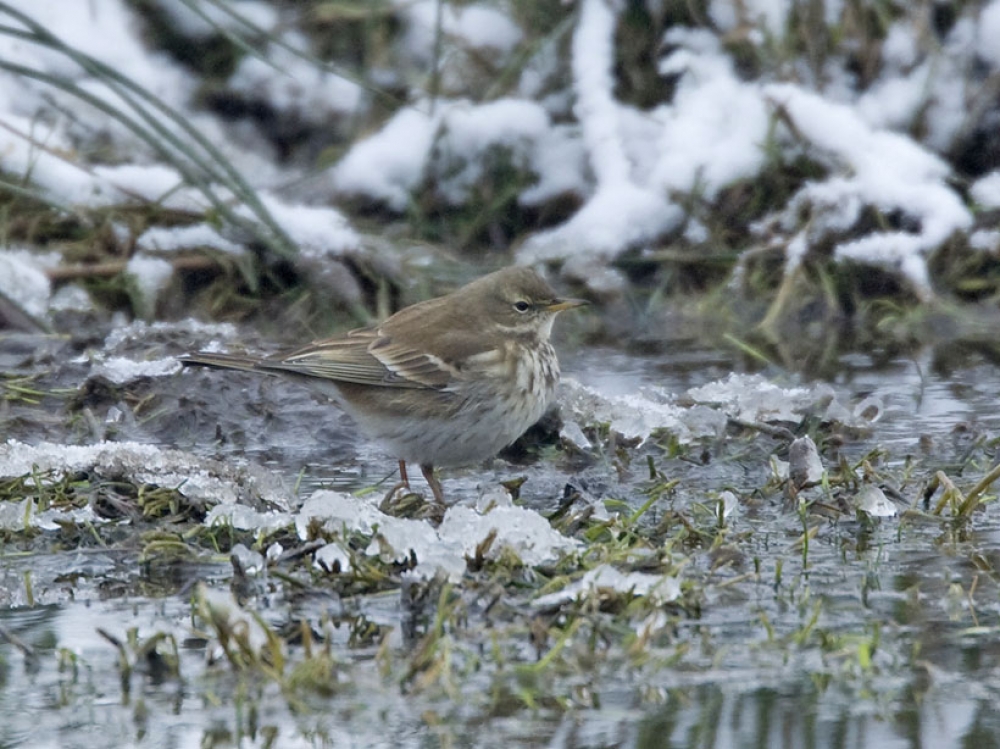Verspreiding en trends
Verspreiding

Deze kaart is gebaseerd op het Punt Transect Tellingen project (PTT). Weergegeven is het gemiddeld aantal exemplaren per telroute. Routes waar de soort niet is waargenomen zijn apart aangegeven (geen landelijke dekking).
Aantalsontwikkeling
niet-broedvogeltrend
Deze grafiek is gebaseerd op het Punt Transect Tellingen project (PTT). Weergegeven is de jaarlijkse index van de winterpopulatie in december (rode punten), de trendlijn (donker gekleurde lijn) en het 95% betrouwbaarheidsinterval
- vanaf 1980
- significante toename, <5% per jaar (+)
- laatste 12 jaar
- significante toename, <5% per jaar (+)
Broedsucces en overleving
Onvoldoende gegevens beschikbaar voor trendanalyse.
Seizoensvoorkomen
seizoenspatroon
Deze grafiek is gebaseerd op LiveAtlas. Weergegeven is de meldingsfrequentie per decade, gemiddeld over de laatste 5 jaren. De meldingsfrequentie is het percentage volledige lijstjes waarop de soort is geregistreerd.
Beschrijving voorkomen
Buiten broedtijd
Afkomstig uit de bergen van Midden-Europa, zoeken Waterpiepers in het winterhalfjaar laaggelegen streken uit. Het leidt onder meer tot trek in noordwestelijke richting, waarbij ze ook Nederland aandoen. De eerste vogels worden meestal half oktober gezien en de trek houdt aan tot diep in november. Overwinteraars zoeken voedsel in ondiep water en modderige plekken. Ze zijn het talrijkst in hoogveen, veenweidegebieden en moeras, totdat de vorst invalt. Dan verkassen ze naar kwelplekken en open zoet water, zoals langs beken en kanalen en in uiterwaarden. Strenge winters dunnen de winteraantallen gevoelig uit. De voorjaarstrek, in tegenstelling tot de meeste vogelsoorten gericht naar het zuiden, vindt plaats in maart en begin april. In deze tijd krijgen Waterpiepers hun prachtkleed, maar de meeste vogels zijn uit Nederland weg voordat dit kleed voltooid is.
Vogelrichtlijn
Staat van instandhouding
De Vogelrichtlijn richt zich op de instandhouding van alle natuurlijk in Europa in het wild levende vogelsoorten waaronder de Waterpieper.
Dit betekent dat de EU-lidstaten maatregelen moeten nemen om de populaties van deze soorten op een niveau te houden of te brengen dat met name beantwoordt aan de ecologische, wetenschappelijke en culturele eisen. Daaronder wordt onder andere een gunstige staat van instandhouding verstaan. Het begrip Staat van instandhouding is zo ongeveer synoniem voor de mate van duurzaamheid of gezondheid van een populatie van een soort.
De Vogelrichtlijn verlangt van de lidstaten dat ze leefgebieden voor vogels in voldoende omvang en kwaliteit in stand houden, waaronder door de aanwijzing van speciale beschermingszones ten behoeve van het Europese Natura 2000-netwerk. Voor de Waterpieper zijn in Nederland geen speciale beschermingszones aangewezen. De landelijke populatie moet zich wel op een gunstig niveau kunnen handhaven.
Methodiek voor de bepaling van de Staat van instandhouding van vogels
niet-broedvogel
De Staat van Instandhouding van de Waterpieper als niet-broedvogel in Nederland is gunstig.
| Beoordeling Staat van Instandhouding | ||||
| Verspreiding | Populatie | Leefgebied | Toekomst | Eindoordeel |
| gunstig | gunstig | gunstig | gunstig | gunstig |
Aangewezen gebieden
Er zijn geen gebieden aangewezen voor deze soort.
Telrichtlijnen
Er zijn geen telrichtlijnen voor deze soort.
